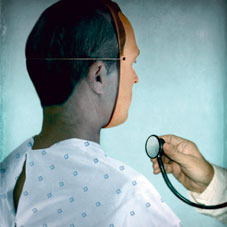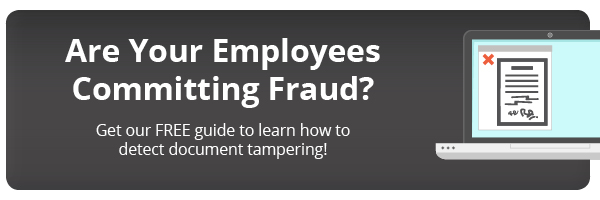Did you know there’s a privacy crime that can kill? I’m not talking about the death of a career or the death of a business. I’m talking about medical identity theft.
 “It’s an insidious crime and the consequences can be deadly,” said Robin Slade with the Medical Identity Fraud Alliance. “This fraud causes your medical records to get contaminated by the perpetrator’s medical information, so it could literally kill you.”
“It’s an insidious crime and the consequences can be deadly,” said Robin Slade with the Medical Identity Fraud Alliance. “This fraud causes your medical records to get contaminated by the perpetrator’s medical information, so it could literally kill you.”
Medical identity theft is a quickly growing problem that very few patients are aware of. Even though this type of crime has affected almost 2 million Americans, a recent study found that only 15% of insured adults are familiar with medical identity theft.
“A stolen medical identity has a $50 street value, whereas a stolen social security number… only sells for $1,” Nationwide Insurance Chief Privacy Officer Kirk Herath said in a statement. “However, while most people are very careful with their social security number to protect their credit and personal information, they tend to be less careful when it comes to their medical information.”
What is Medical Identity Theft?
Visit NBCNews.com for breaking news, world news, and news about the economy
Medical identity theft takes place when someone uses another person’s name and personal identifying information to get medical services, devices or prescription drugs.
When a patient’s medical identity is stolen, the fraudster's medical information is added to the victim's medical records. This false information can lead to an inaccurate medical history or incorrect diagnosis.
Other consequences can include:
- Exhaustion of health insurance benefits
- Failure of screening exams for employment due to conditions on health reacords that belong to individuals who stole their identities
- Harm to credit reports
- Calls from collection agencies
How to Protect Your Patients
While patients carry a lot of the burden of preventing medical ID theft, healthcare providers aren’t off the hook. In fact, the California Department of Justice recently published a Medical Identity Theft guide, which gives providers three steps for protecting patients from medical identity theft:
1. Know Your Staff
 Knowing your staff is the first step to protecting your patients from medical identity theft. Use employee background checks to identify candidates with a criminal history whenever you hire people who will have access to patient information or medical records. Don’t forget to screen temporary hires and volunteers too.
Knowing your staff is the first step to protecting your patients from medical identity theft. Use employee background checks to identify candidates with a criminal history whenever you hire people who will have access to patient information or medical records. Don’t forget to screen temporary hires and volunteers too.
If your office uses electronic health record (EHR) systems, you should use role-based access controls. These controls will limit access to only the information employees need to perform their jobs.
2. Know Your Patients
Knowing your patients is the next step toward protecting against medical identity theft. Here are some things you can do to make sure you’re not treating an identity thief:
- Ask for copy of their insurance card—Require your patients to show a copy of their health insurance card at registration.
- Require a photo ID—Think about requiring a photo ID for patients at registration. Be sure to train staff to check that the patient and the photograph resemble each other.
- Include a photo in your EHR system—If it’s possible, include patient photos in your EHR records to make check-in easier for staff and patients. (Note: Don’t include scanned copies of government-issued IDs in medical records because this adds unnecessary personal information to the record, increasing the risk of identity theft.)
- Set up a process for confirming the identity of questionable patients—If a patient presents a questionable ID or no ID at all, your staff should know how to proceed. Establish a process for confirming a patient’s identity.
3. Educate Your Patients
 Patient education is an incredibly important aspect of preventing and detecting medical ID theft. Your staff should work to educate patients about the risks of and warning signs of medical identity theft.
Patient education is an incredibly important aspect of preventing and detecting medical ID theft. Your staff should work to educate patients about the risks of and warning signs of medical identity theft.
Warning signs include:
- Getting a bill for a medical service they didn’t receive
- Being contacted by a debt collector about an unknown debt
- Seeing unfamiliar medical collection notices on their credit report
- Finding incorrect listings of office visits or treatments on their explanation of benefits
- Finding out that they’ve reached the limit on benefits for their health plan
- Being denied insurance based on a medical condition they don’t have
When handing patients a copy of their records at the end of a visit, be sure to ask them to verify the accuracy of the information. Patients who access electronic documents should also confirm that their information is correct.
Obviously, there is no surefire way to prevent medical ID theft or fraud. But if you follow these guidelines, you can rest easy knowing you’ve done your part to protect patient identities.
%20formatted-1.png?width=2528&height=739&name=SIGNiX%20Logo%20Main%20(white)%20formatted-1.png)

